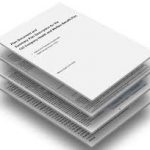When I was working in a CPA firm, the 3rd Party Administrators would always fight us on testing of documents such as loans, benefits paid to participants and contributions. Their attitude was something was like this: “You have the financial statement numbers, why do have to test. It is a waste of time.”
The answer to that ridiculous comment is to ensure that controls and procedures are in place and to make sure that the people are entitled and able to take these loans and benefits.
In addition, numerous seminars and CPE classes have essentially stated the same thing. Testing of documents is as important as the financial statement numbers.
What do you do when you test loans for example? The first thing to do is to determine what percentage of new loans you are testing. As a general rule, I pick a random sample of new loans – usually in the 20 to 30% range for my sample size. Occasionally, I will look for large loans and at times I will look for small new loans. You want to include as much of a variety in the sampling process as possible. You also look to see if the loan terms, payments and interest payments are viewable. Number of years has to be in the equation also.
Next step in the procedure are the actual samples picked. You make sure the loan applied for does not exceed 50% of the participant’s balance or exceeds $50,000 with rare exception. You get a copy of the balance in the account to ensure that they are qualified to take this loan. You see that payment terms and years are listed.
For the most part, the same procedure is in effect for benefits paid. I also do a random sample of about 20 to 30% of benefits paid that year. You get documents showing the amount the participant has in his or her account. You also get a copy of a 1099 or W-2 if applicable showing that the participant received this money. When doing benefits paid, I try to include, as I did with the loans a wide variety of large, medium and small payments to make this as fair as possible.
For contributions, you try to get an earnings card showing how much they want deducted every pay period. You take a sample of a pay period to verify this and finally you get a copy of the participant’s W-2 to see that the amount was deducted. You also get, if applicable, a record of the employer match and ensure that it too is on the participant’s W-2.
A big fallacy with audits of 401(k) Plans is the “Limited Scope Audit.” While the auditor disclaims an opinion on the financials, the “limited scope” applies only to the investments which are certified as to being accurate. It does not mean that the auditor doesn’t do any testing of the above-mentioned items – it only applies to the investments.
What I have given is only a brief description of the various nuances of audits of 401(k) Plans for testing and sampling.
I want to emphasize once again the importance the Department of Labor (DOL) puts on the testing of the documents I have mentioned. Random testing of such documents gives the auditor some assurance that controls and procedures are in order.






